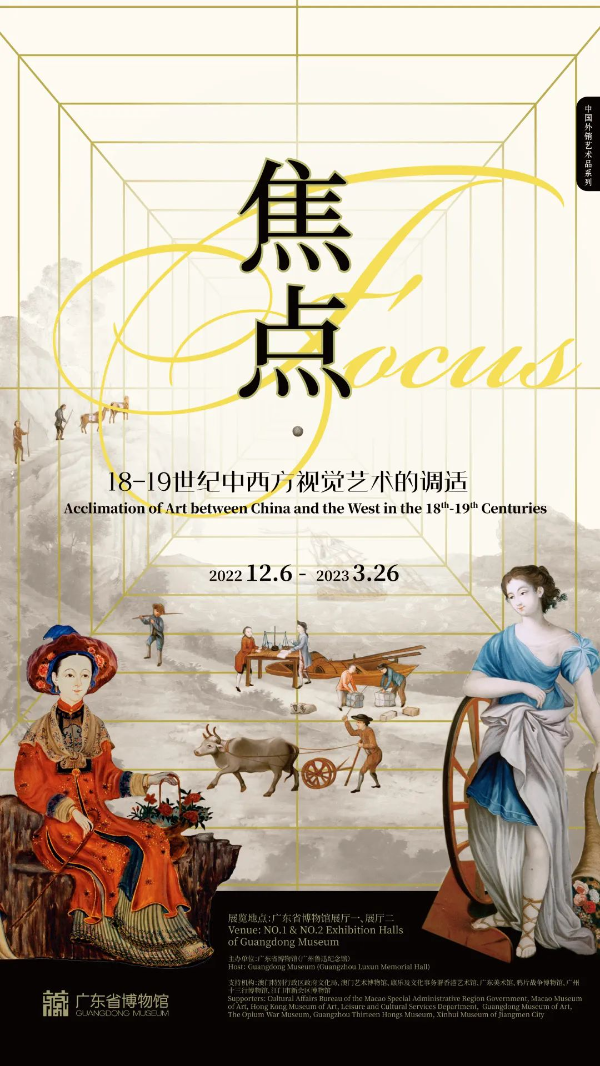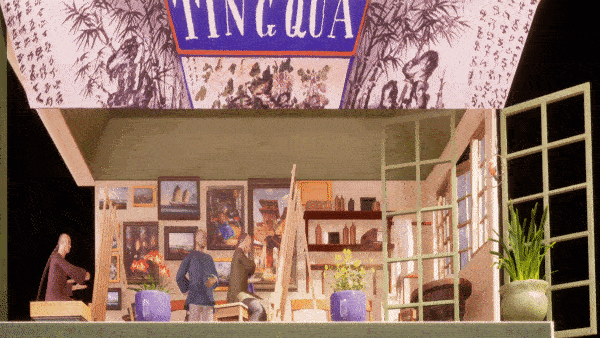Are you curious about what Guangzhou's Huangpu Port, Pazhou Tower, and the Pearl River looked like nearly 200 years ago? The exhibition "Focus: Acclimation of Art between China and the West in the 18th-19th Centuries" is currently underway at the Guangdong Museum, showcasing over 140 pieces (sets) of Chinese export paintings on the city's landscape, customs, and people's living.

(Photo: Guangdong Museum)
In the 18th and 19th centuries, Canton (today's Guangzhou) was an important hub for world trade, making it a window for cultural and artistic exchanges between China and the West. Several Guangzhou painters used both Chinese and Western painting techniques and materials to draw works featuring the European "Chinoiserie" style, which were exported overseas and were popular among people in the West.
The exhibition shows the acclimation of art between China and the West in terms of painting styles, skills, and materials.


(Photo provided to GDToday)
The first part of the exhibition, "Acclimation of the Painting Styles", focuses on British artist George Chinnery, described as the last British romantic artist in the Far East, and painters influenced by his painting style. He used to live in Macao and created a painting style with a distinctive flavor of China developed from the unique geography of the South China Sea.

George Chinnery's self-portrait copied by Lam Qua (Photo provided to GDToday)
Chinnery's painting style influenced export painters in Guangdong, Hong Kong, and Macao, and was inherited and developed by artists such as Thomas Boswell Watson, Marciano António Baptista, and Lam Qua ("Qua" originated from Quadro, a Portuguese word meaning painting), who ushered in the "Canton era" of Chinese and Western visual arts in the process of conversation and adaptation.
In the other two sections of the exhibition, visitors can appreciate various paintings on different subjects such as botanicals, ships, landscapes, portraits, and customs, as well as different genres of works including oil paintings, watercolors, reverse glass paintings, sketching, and gouache paintings.

Thirteen Hongs by Shun Qua (Photo provided to GDToday)

Canton Port by Yu Qua (Photo provided to GDToday)

Pazhou Pagoda (Photo provided to GDToday)

The painting shows workers on the southern bank of the Pearl River carrying boxes of packed tea to sampan boats that will be transferred to western merchant ships moored in Huangpu port. (Photo: Guangdong Museum)

Reverse glass painting (Photo provided to GDToday)

Reverse glass painting (Photo provided to GDToday)

(Photo provided to GDToday)
In addition, the exhibition features a special restoration of painter Ting Qua's workshop and a European nobleman's bedroom with Chinese export paintings through projection fusion technology. Visitors can also try their hand at 'painting' an electronic export painting for an immersive experience.


(Photo: Guangdong Museum)
Time: 9:00-17:00 (closed on Mondays), until March 26, 2023
Venue: Exhibition Hall I & II, 3rd floor
Add.: No. 2, Zhujiang East Road, Zhujiang New Town, Tianhe District, Guangzhou (广州市天河区珠江东路2号)
Nearest metro station: Take Metro Line 1 or Line 3, get off at Zhujiang New Town Station and use Exit C.
Where to make a reservation: Official WeChat account "广东省博物馆 (pinyin: guang dong sheng bo wu guan)"
You can also scan the QR code to get an interpretation in English and Chinese.

All materials marked with "source: English.gz.gov.cn" on this website (including but not limited to text, photographs, audio and video materials) are the copyrighted property of Guangzhou International (the official website of Guangzhou Municipality). Without prior authorization from Guangzhou International, any media, website, organization or individual shall not transmit, interlink, distribute or republish such materials in any form. Any media and website authorized to republish such materials shall mark them with "source: Guangzhou International (English.gz.gov.cn)". Infringement of these copyrights will result in legal action.
